Bamboo flooring has gained popularity in recent years due to its sustainability, durability, and aesthetic appeal. Understanding the average cost of bamboo flooring is essential for homeowners considering this eco-friendly option. This article provides a detailed breakdown of the factors influencing the cost, installation expenses, and long-term value of bamboo flooring.
Types of Bamboo Flooring
- Horizontal Bamboo Flooring Horizontal bamboo flooring is created by gluing thin strips of bamboo together horizontally. This type of flooring showcases the natural growth rings of the bamboo, giving it a unique and organic look. The cost of horizontal bamboo flooring typically ranges from $2 to $5 per square foot. It’s a popular choice for those who want to highlight the natural beauty of bamboo while staying within a moderate budget.
- Vertical Bamboo Flooring Vertical bamboo flooring is made by gluing bamboo strips vertically. This arrangement results in a more uniform and linear appearance compared to horizontal bamboo flooring. The cost for vertical bamboo flooring is generally in the same range as horizontal, averaging between $2 and $5 per square foot. It’s a great option for those who prefer a cleaner and more modern look while still benefiting from bamboo’s durability.
- Strand-Woven Bamboo Flooring Strand-woven bamboo flooring is created by compressing bamboo fibers under high pressure. This process produces an extremely dense and durable flooring option. Strand-woven bamboo flooring is known for its strength and resistance to wear and tear, making it suitable for high-traffic areas. Due to its enhanced durability, the cost of strand-woven bamboo flooring is higher, ranging from $4 to $9 per square foot. Despite the higher upfront cost, its long-lasting nature can provide excellent value over time.
- Engineered Bamboo Flooring Engineered bamboo flooring consists of a thin layer of bamboo veneer over a core made of plywood or fiberboard. This type of flooring is designed to offer the look of solid bamboo while providing added stability and resistance to moisture. The cost of engineered bamboo flooring ranges from $3 to $8 per square foot. It’s an ideal choice for areas with fluctuating humidity levels or where solid bamboo may not be suitable.
- Carbonized Bamboo Flooring Carbonized bamboo flooring undergoes a heating process that darkens the bamboo and gives it a rich, amber color. This process also makes the bamboo slightly softer, which can affect its durability. The cost of carbonized bamboo flooring is similar to that of standard bamboo flooring, ranging from $2 to $5 per square foot. Homeowners choose carbonized bamboo for its unique color, which can add warmth and elegance to a space.

Factors Influencing Bamboo Flooring Costs
Several factors influence the cost of bamboo flooring, making it essential to consider these variables when budgeting for your project. Understanding these factors can help you make informed decisions and find the best value for your investment.
Quality and Grade The quality and grade of bamboo flooring significantly impact its cost. Higher-quality bamboo flooring is typically more expensive due to its superior durability and finish. Flooring graded as “premium” or “A-grade” often features fewer imperfections and a more consistent appearance. While lower-grade options are more affordable, they may have more visible knots and color variations.
Brand and Manufacturer The brand and manufacturer of bamboo flooring also play a role in determining its cost. Established brands with a reputation for quality and reliability may charge a premium for their products. However, they often provide warranties and customer support, offering peace of mind. Lesser-known brands may offer more affordable options but may lack the same level of assurance.
Plank Size and Thickness The size and thickness of bamboo flooring planks can affect the overall cost. Thicker planks generally provide better durability and stability, which can justify a higher price. Additionally, wider and longer planks often cost more due to the increased amount of raw material required. Consider the specific needs of your space and choose the plank size and thickness accordingly.
Finishes and Treatments Bamboo flooring comes in various finishes and treatments, each affecting the cost. Pre-finished bamboo flooring, which is finished at the factory, is typically more expensive than unfinished options. However, pre-finished flooring saves time and labor costs during installation. Special treatments, such as UV protection or water resistance, can also add to the cost but offer additional benefits.
Installation Method The installation method you choose can impact the cost of bamboo flooring. Nail-down, glue-down, and floating installations each have different cost implications. Floating installations, which do not require adhesives or nails, are often more affordable and quicker to install. However, glue-down and nail-down methods may provide a more secure and durable result, justifying the higher installation cost.
Geographic Location The geographic location of your home can influence the cost of bamboo flooring due to variations in labor rates and material availability. Urban areas with higher living costs may have higher prices for both materials and installation. Additionally, shipping costs for bamboo flooring can vary based on your location, affecting the overall cost of the project.

Installation Costs
In addition to the cost of the bamboo flooring itself, installation expenses play a significant role in the overall budget of your flooring project. It’s important to understand the various components of installation costs to ensure an accurate estimate.
Labor Costs Labor costs are a major component of installation expenses. The cost of hiring professional installers varies based on the complexity of the job, the size of the area, and local labor rates. On average, labor costs for installing bamboo flooring range from $4 to $8 per square foot. This includes preparation, installation, and finishing tasks. While DIY installation can save money, hiring professionals ensures a high-quality and efficient installation.
Subfloor Preparation Proper subfloor preparation is essential for a successful bamboo flooring installation. This may involve leveling the subfloor, removing old flooring, and addressing any moisture issues. The cost of subfloor preparation can vary based on the condition of the existing subfloor and the necessary repairs. On average, subfloor preparation costs range from $1 to $3 per square foot.
Underlayment An underlayment is often recommended for bamboo flooring installations to provide additional cushioning, moisture protection, and sound insulation. The cost of underlayment varies depending on the type and quality. Basic foam underlayment costs around $0.25 to $0.75 per square foot, while premium options with enhanced features can cost $1 to $2 per square foot.
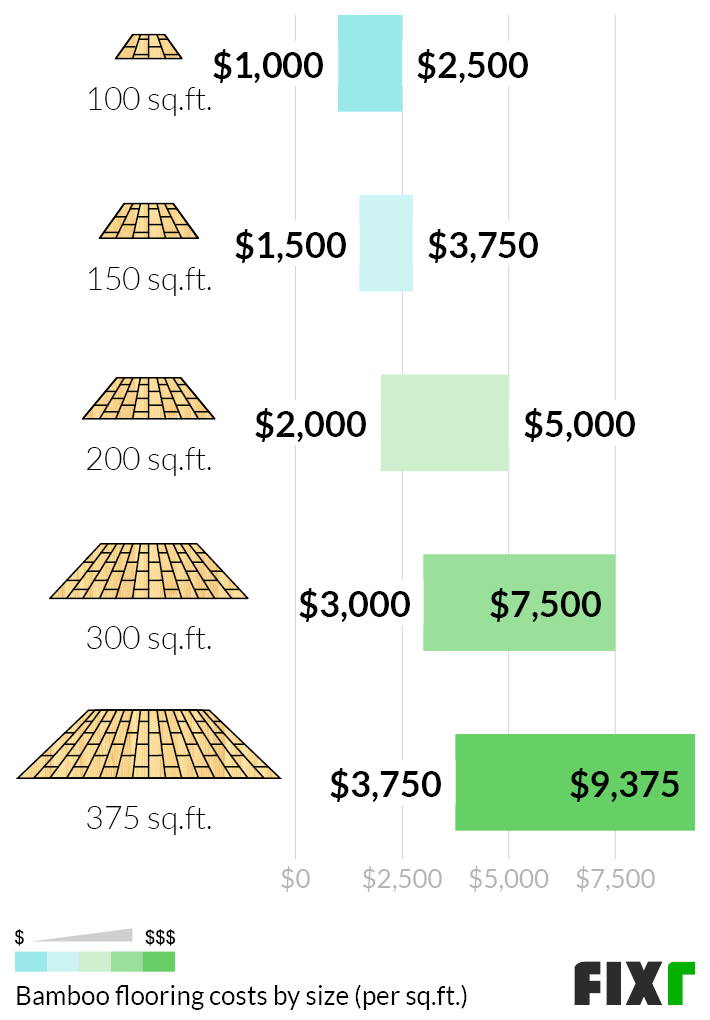
Adhesives and Fasteners If you choose a glue-down or nail-down installation method, you’ll need to factor in the cost of adhesives and fasteners. Quality adhesives for bamboo flooring typically cost between $1 and $3 per square foot. Nails, staples, or screws for a nail-down installation can add $0.10 to $0.50 per square foot to the overall cost.
Trim and Moldings Finishing touches, such as trim and moldings, are necessary to complete the installation and provide a polished look. Baseboards, transition strips, and quarter-round moldings can add to the overall cost. Depending on the material and style, trim and moldings cost between $1 and $5 per linear foot. Ensure that the trim and moldings match the style and color of your bamboo flooring for a cohesive appearance.
Waste and Overages When calculating installation costs, it’s important to account for waste and overages. It’s common to order 5% to 10% more flooring than the actual square footage to accommodate for cutting and fitting. This ensures that you have enough material to complete the installation without delays. The cost of this additional material should be factored into your overall budget.
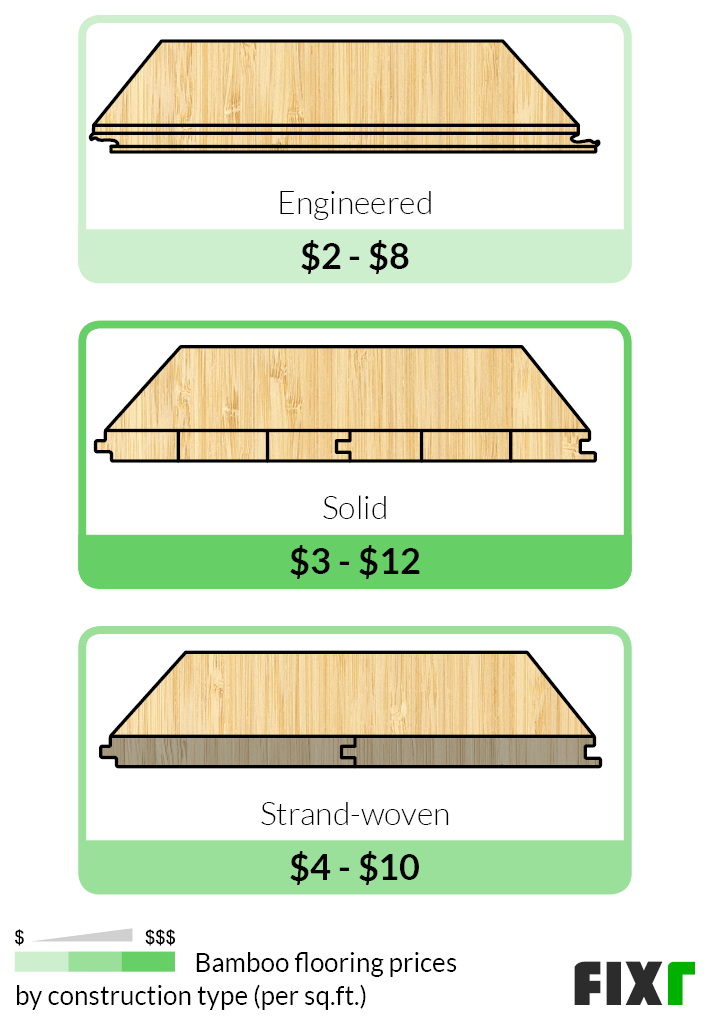
Comparing Bamboo Flooring to Other Options
When evaluating the cost of bamboo flooring, it’s helpful to compare it to other flooring options to understand its relative value and benefits. Here, we compare bamboo flooring to hardwood, laminate, vinyl, and carpet.
Bamboo vs. Hardwood Hardwood flooring is a classic and timeless choice, but it often comes with a higher price tag compared to bamboo. The cost of hardwood flooring ranges from $5 to $15 per square foot, depending on the species and quality. While hardwood offers natural beauty and durability, bamboo flooring provides similar aesthetics at a lower cost. Additionally, bamboo is more sustainable, as it grows faster than hardwood trees.
Bamboo vs. Laminate Laminate flooring is a budget-friendly option that mimics the look of wood. The cost of laminate flooring typically ranges from $1 to $5 per square foot. While laminate is more affordable than bamboo, it may not offer the same level of durability and environmental benefits. Bamboo flooring is more resistant to moisture and wear, making it a longer-lasting investment.
Bamboo vs. Vinyl Vinyl flooring is another cost-effective alternative to bamboo. The cost of vinyl flooring ranges from $1 to $7 per square foot. Vinyl is highly durable and water-resistant, making it suitable for areas prone to moisture. However, bamboo flooring offers a more natural and eco-friendly option, with a unique appearance that cannot be replicated by vinyl.
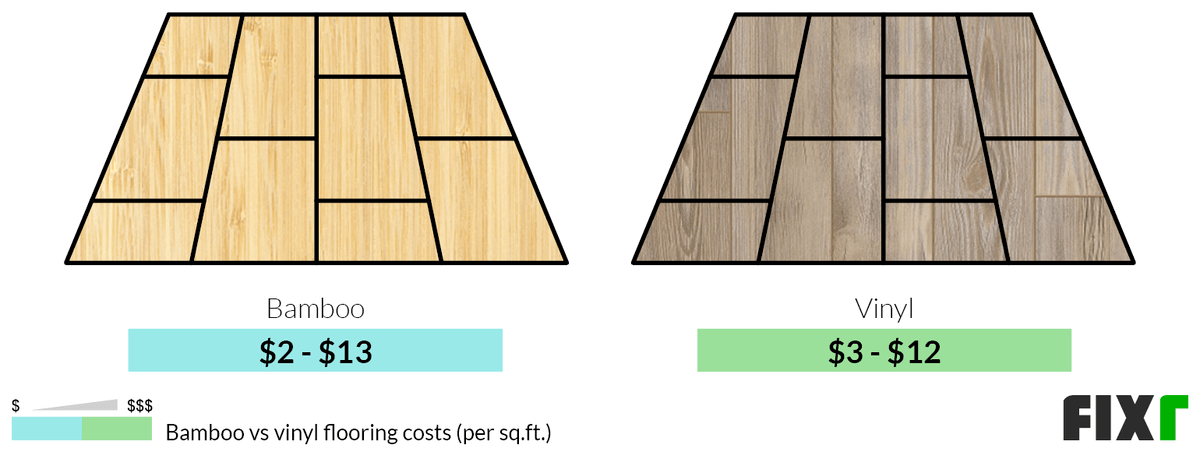
Bamboo vs. Carpet Carpet is a popular choice for comfort and warmth, with costs ranging from $2 to $10 per square foot. While carpet is softer underfoot, it requires more maintenance and may not be as durable as bamboo flooring. Bamboo offers a more hygienic and easy-to-clean surface, making it ideal for households with allergies or pets.
Bamboo vs. Tile Tile flooring is known for its durability and water resistance, with costs ranging from $3 to $10 per square foot. While tile is a suitable option for bathrooms and kitchens, it can be cold and hard underfoot. Bamboo flooring provides a warmer and more comfortable alternative while still offering good moisture resistance and durability.
Bamboo vs. Engineered Wood Engineered wood flooring combines a real wood veneer with a plywood core, offering stability and versatility. The cost of engineered wood flooring ranges from $3 to $10 per square foot. While engineered wood provides a similar look to solid hardwood, bamboo flooring offers a more eco-friendly and affordable option without compromising on aesthetics.
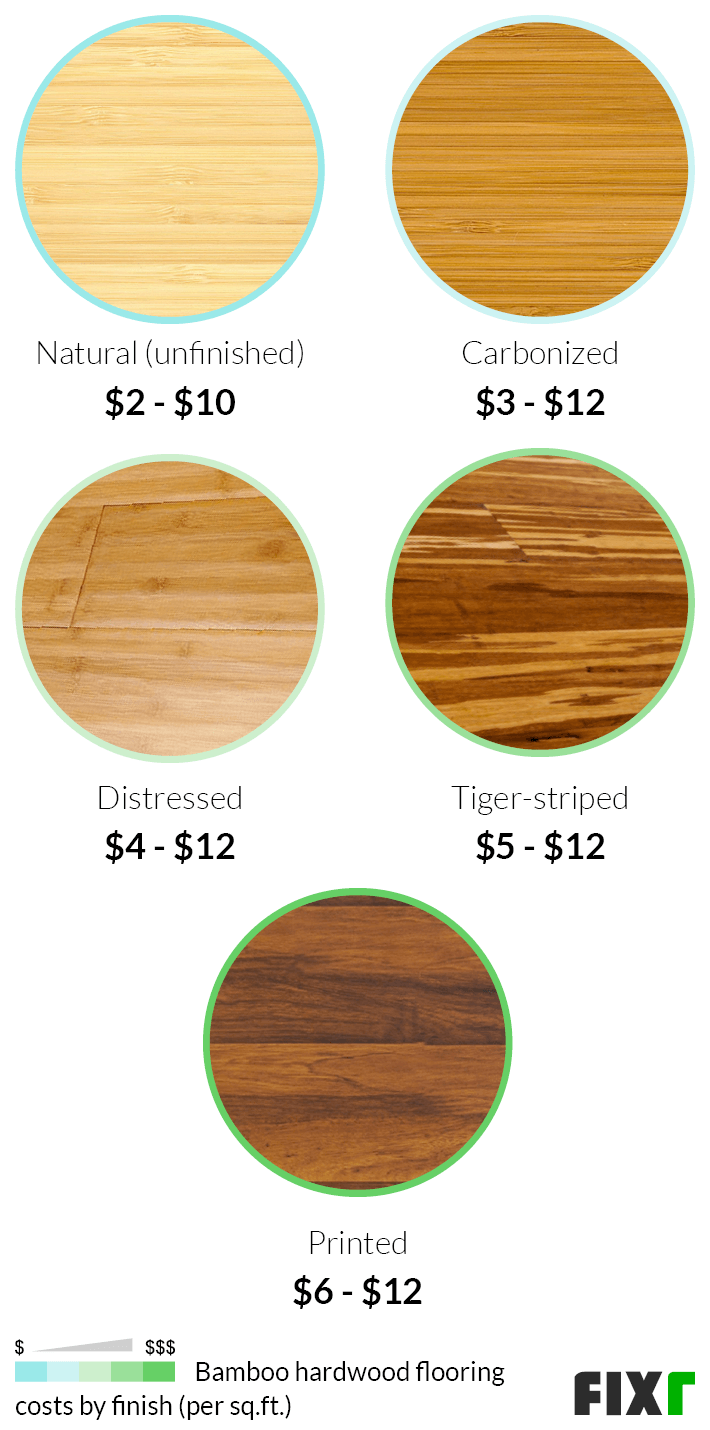
Long-Term Value and Benefits
Investing in bamboo flooring offers several long-term value and benefits that make it an attractive choice for homeowners. Understanding these advantages can help justify the initial cost and highlight the overall value of bamboo flooring.
Sustainability Bamboo is a highly sustainable material, as it grows rapidly and can be harvested without harming the plant. Bamboo forests regenerate quickly, making it an environmentally friendly option compared to traditional hardwood flooring. Choosing bamboo flooring supports sustainable practices and reduces the impact on forests and ecosystems.
Durability Bamboo flooring is known for its strength and durability, especially strand-woven bamboo, which is even harder than some hardwoods. It can withstand heavy foot traffic and is resistant to dents and scratches. With proper care and maintenance, bamboo flooring can last for decades, providing excellent long-term value.
Aesthetic Appeal Bamboo flooring offers a unique and natural appearance that adds warmth and elegance to any space. It comes in various colors, grains, and finishes, allowing homeowners to choose a style that complements their decor. The versatility of bamboo flooring makes it suitable for both traditional and contemporary interiors.
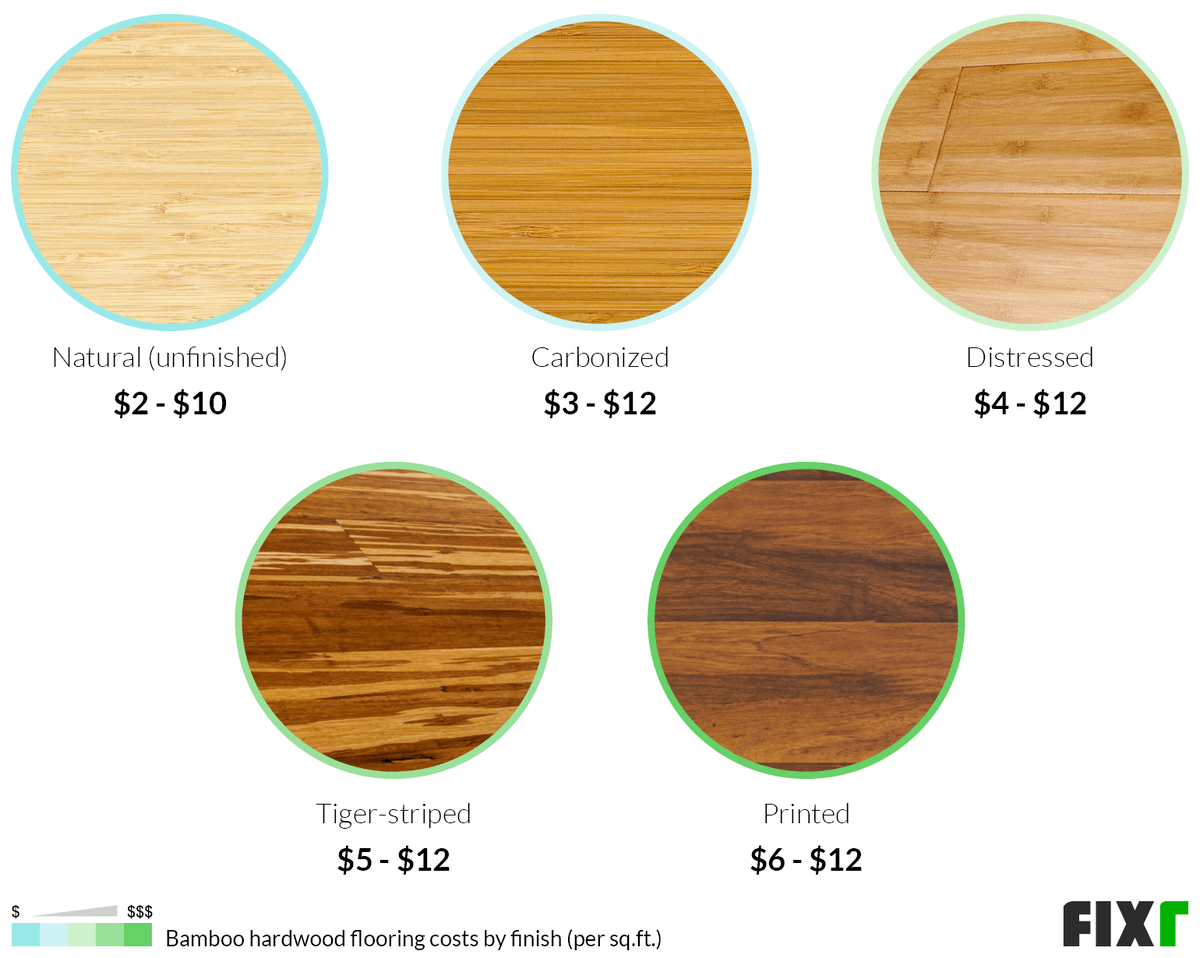
Low Maintenance Bamboo flooring is relatively low maintenance compared to other flooring options. Regular sweeping and occasional mopping are usually sufficient to keep it clean. Unlike carpet, which can trap dust and allergens, bamboo flooring provides a hypoallergenic surface that is easy to maintain, making it ideal for households with allergies or pets.
Value Addition Installing bamboo flooring can increase the value of your home. Its eco-friendly attributes and modern appeal make it an attractive feature for potential buyers. Homes with bamboo flooring may have a competitive edge in the real estate market, potentially leading to a higher resale value.
Comfort and Warmth Bamboo flooring provides a comfortable and warm surface underfoot, making it more pleasant to walk on compared to tile or laminate. It also offers good insulation properties, helping to maintain a comfortable indoor temperature. This can result in energy savings and a more comfortable living environment.
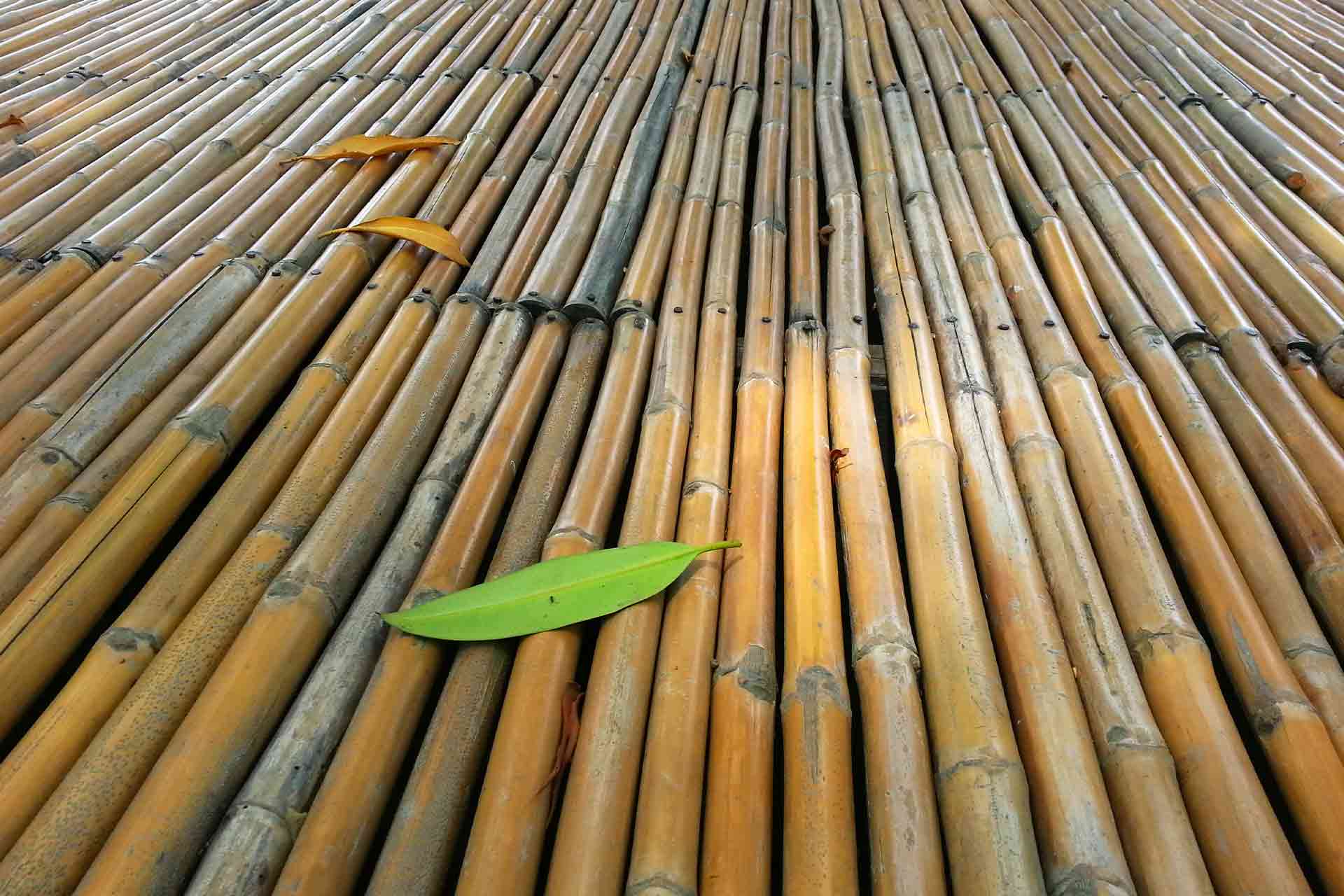
Maintenance and Care
Proper maintenance and care are essential to preserving the beauty and longevity of bamboo flooring. Following these guidelines can help you keep your bamboo floors in excellent condition for years to come.
Regular Cleaning Regular cleaning is crucial to maintaining bamboo flooring. Sweep or vacuum the floor regularly to remove dirt and debris that can cause scratches. Use a soft-bristle broom or a vacuum cleaner with a hardwood floor attachment to avoid damaging the surface. Additionally, use a damp mop with a mild, pH-neutral cleaner to clean the floor. Avoid using excessive water, as bamboo is susceptible to moisture damage.
Preventing Scratches To prevent scratches, place felt pads under furniture legs and avoid dragging heavy objects across the floor. Use rugs or mats in high-traffic areas, such as entryways and hallways, to protect the floor from wear and tear. Trim pet nails regularly to prevent scratches from claws. If scratches do occur, use a wood filler or touch-up pen recommended by the flooring manufacturer to repair minor damage.
Managing Moisture Moisture is a common enemy of bamboo flooring. Wipe up spills immediately to prevent water from seeping into the flooring and causing damage. Use a dry or slightly damp cloth to clean spills, and avoid using steam mops or wet mops. Maintain a consistent indoor humidity level, ideally between 40% and 60%, to minimize the risk of moisture-related issues.
Preventing Fading Direct sunlight can cause bamboo flooring to fade over time. Use curtains, blinds, or UV-protective window film to reduce sun exposure. Rearrange furniture and rugs periodically to ensure even exposure to sunlight. Consider applying a UV-protective finish to the flooring to minimize fading and maintain its original color.
Refinishing Over time, bamboo flooring may show signs of wear, such as dullness or minor scratches. Refinishing can restore the floor’s appearance and extend its lifespan. Consult the flooring manufacturer for recommendations on refinishing products and techniques. Light sanding and applying a new finish can revitalize the floor and protect it from future damage.
Professional Maintenance For deep cleaning and maintenance, consider hiring a professional flooring service. Professionals have the expertise and equipment to thoroughly clean and maintain bamboo flooring. They can also identify and address any issues, such as scratches or moisture damage, ensuring that your flooring remains in excellent condition.
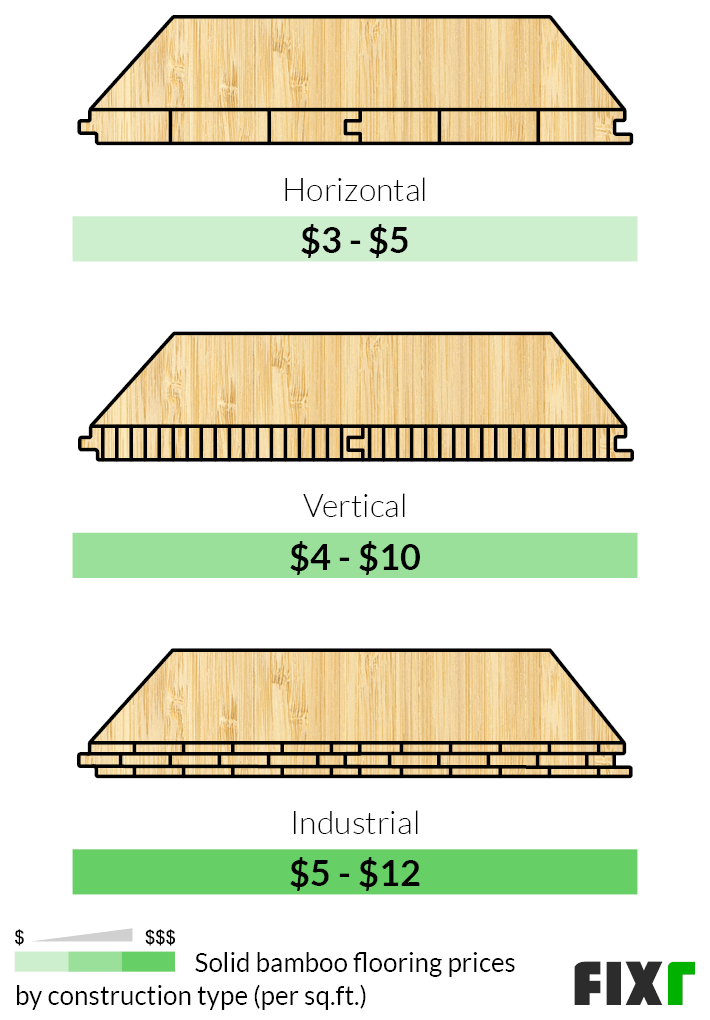
Common Mistakes to Avoid
When investing in bamboo flooring, avoiding common mistakes can help ensure a successful installation and long-lasting results. Here are some common pitfalls to watch out for:
Skimping on Quality Choosing low-quality bamboo flooring to save money can lead to issues such as warping, cracking, or premature wear. Invest in high-quality bamboo flooring from reputable manufacturers to ensure durability and performance.
Ignoring Moisture Levels Failing to address moisture levels can result in damage to bamboo flooring. Ensure that the subfloor is dry and use a moisture barrier if necessary. Maintain proper indoor humidity levels to prevent moisture-related issues.
Improper Installation Incorrect installation methods can compromise the stability and appearance of bamboo flooring. Follow the manufacturer’s installation guidelines and consider hiring professional installers for a precise and secure installation.
Using Harsh Cleaners Using harsh or abrasive cleaners can damage the finish of bamboo flooring. Stick to mild, pH-neutral cleaners recommended by the flooring manufacturer. Avoid using excessive water or steam mops, which can cause moisture damage.
Neglecting Maintenance Regular maintenance is essential to preserving bamboo flooring. Neglecting cleaning, moisture management, or scratch prevention can lead to deterioration over time. Follow proper care guidelines to keep the flooring in excellent condition.
Ignoring Manufacturer Recommendations Each type of bamboo flooring may have specific care and maintenance requirements. Ignoring manufacturer recommendations can void warranties and lead to problems. Always follow the guidelines provided by the flooring manufacturer for the best results.

How long does bamboo flooring last?
Bamboo flooring can last 20 to 25 years or more with proper care and maintenance. Its lifespan depends on factors such as the quality of the bamboo, the type of finish, and the level of foot traffic. Regular cleaning, moisture management, and addressing scratches promptly can help extend the life of your bamboo flooring.
Is bamboo flooring suitable for kitchens and bathrooms?
While bamboo flooring can be used in kitchens and bathrooms, it’s important to take extra precautions due to the higher moisture levels in these areas. Use a moisture barrier during installation and ensure proper sealing to prevent water damage. Wipe up spills immediately and maintain good ventilation to reduce humidity levels.
Can bamboo flooring be refinished?
Yes, bamboo flooring can be refinished, but the process and frequency depend on the type of bamboo and the thickness of the wear layer. Strand-woven bamboo is more difficult to refinish due to its density. Consult the flooring manufacturer for specific refinishing recommendations. Refinishing can restore the floor’s appearance and extend its lifespan.
How does bamboo flooring compare to hardwood in terms of cost and durability?
Bamboo flooring is generally more affordable than hardwood, with costs ranging from $2 to $9 per square foot, compared to $5 to $15 per square foot for hardwood. Bamboo is also more sustainable and can be harder and more durable, especially strand-woven bamboo. However, both options offer excellent durability and aesthetic appeal, making them suitable choices for various applications.
Is bamboo flooring environmentally friendly?
Yes, bamboo flooring is considered environmentally friendly due to its sustainability. Bamboo grows rapidly and can be harvested without killing the plant, allowing for quick regeneration. Choosing bamboo flooring supports sustainable practices and reduces the impact on forests and ecosystems. However, ensure that the bamboo flooring is sourced from reputable manufacturers with sustainable harvesting practices.
What should I do if my bamboo flooring gets scratched or damaged?
For minor scratches, use a wood filler or touch-up pen recommended by the flooring manufacturer to repair the damage. For deeper scratches or dents, you may need to replace the affected planks. Prevent future damage by using protective pads under furniture, placing rugs in high-traffic areas, and trimming pet nails regularly. If significant damage occurs, consider consulting a professional for repairs or refinishing.
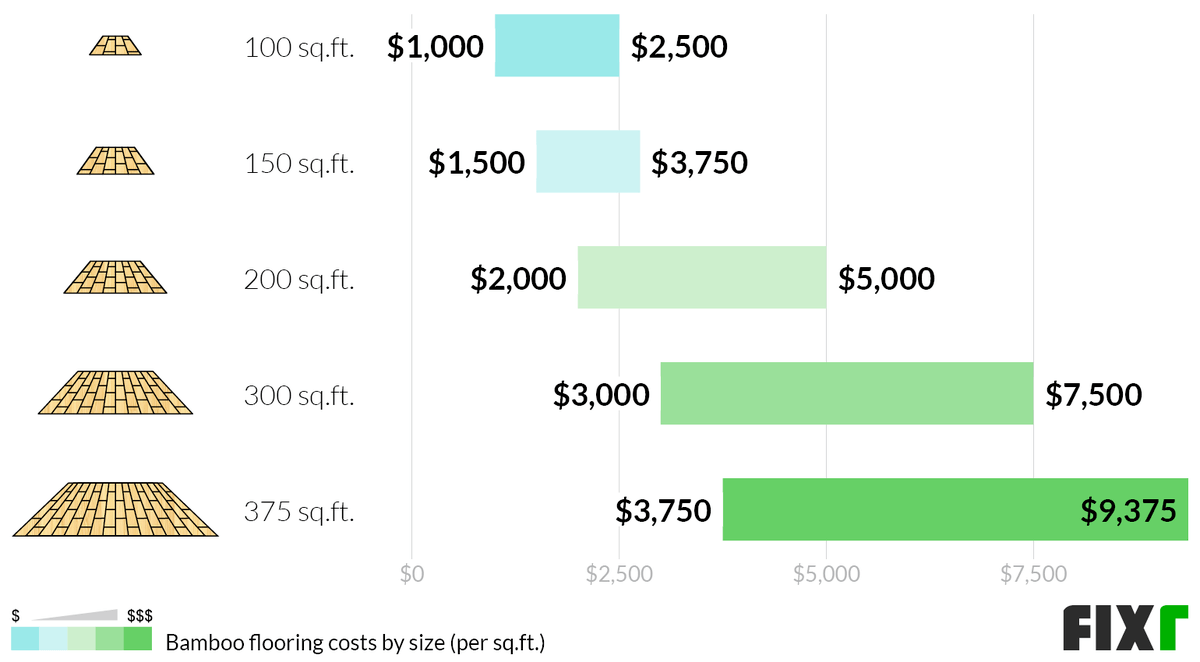
Related Posts: